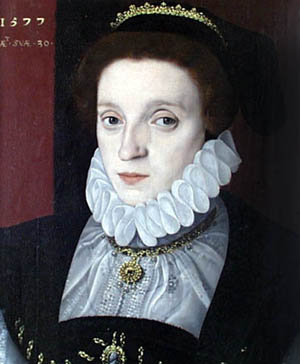William FitzWilliam (Lord Deputy) facts for kids
Sir William FitzWilliam (born 1526, died 1599) was an important English leader. He served as the Lord Justice of Ireland and later as the Lord Deputy of Ireland. These were very powerful jobs, like being a governor, in Ireland during the time of Queen Elizabeth I. In 1587, he was in charge of Fotheringhay Castle and oversaw the execution of Mary, Queen of Scots. Sir William was also a member of the English Parliament for Peterborough and represented County Carlow in the Irish Parliament. He lived at Gainspark in Essex and at Milton Hall.
Contents
Early Life and Family
William FitzWilliam was born at Milton Hall in Northamptonshire, England. He was the oldest son of Sir William FitzWilliam and Anne Shapcote. His grandfather, also named William Fitzwilliam, was a very important person in London, serving as Sheriff of London. He had also worked for Cardinal Wolsey, a powerful church leader.
Sir William's mother was related to the Earl of Bedford. This connection helped William FitzWilliam meet King Edward VI when he was young.
In 1543, William FitzWilliam married Anne Sidney, who passed away in 1602. She was the daughter of Sir William Sidney from Penshurst Place. Anne had famous relatives, including her brother, Sir Henry Sidney, who was the father of the famous poet and soldier Sir Philip Sidney.
William and Anne FitzWilliam had five children:
- Sir William Fitzwilliam (died 1618)
- John Fitzwilliam (1554–1612)
- Anne Fitzwilliam
- Phillipa Fitzwilliam
- Mary Fitzwilliam (died 1601)
Political Career
Sir William FitzWilliam was elected to the English Parliament for Peterborough several times, in 1553, 1559, and 1581.
Service in Ireland
In 1559, FitzWilliam was given the job of Vice-Treasurer of Ireland. He also became a member of the Irish Parliament, representing County Carlow. During his time as treasurer, some people questioned how he managed money, but nothing was ever proven against him.
Between 1559 and 1571, he served five times as Lord Justice of Ireland. This meant he was in charge when the main governor, the Lord Deputy, was away. In 1571, he became the Lord Deputy himself. This was a very challenging role because Queen Elizabeth's government often did not send enough money or supplies to Ireland. This made it hard to keep things organized and peaceful.
FitzWilliam had disagreements with other English officials in Ireland, like Sir Edward Fitton. However, he did manage to bring the powerful Earl of Desmond under control in 1574. After becoming very ill, he was allowed to leave his position in Ireland in 1575.
Governor of Fotheringhay Castle
After returning to England, FitzWilliam was appointed governor of Fotheringhay Castle. This was a very important job because Mary, Queen of Scots was imprisoned there. In 1587, he was responsible for overseeing her execution.
Final Time in Ireland
In 1588, FitzWilliam returned to Ireland as Lord Deputy for a second time. Even though he was older and not well, he was very active. He led expeditions and continued to have disagreements with other officials, like Sir Richard Bingham. He relied heavily on Sir Robert Gardiner, the Lord Chief Justice of Ireland, and asked him to stay in his role because he was so "wise, temperate and useful."
FitzWilliam also got involved in a case against his predecessor, Sir John Perrot. A priest made accusations that Perrot had plotted with King Philip II of Spain against the Queen. These accusations were serious, and Perrot was found guilty, dying before he could be punished.
FitzWilliam took a strong approach in parts of Ireland, especially in Connaught and Ulster. These actions changed the peace that had been in place for some time. In 1588, many ships from the Spanish Armada were wrecked off the Irish coast. FitzWilliam was responsible for ordering the capture and punishment of many Spanish sailors who survived.
After dealing with the Spanish threat, FitzWilliam focused on the Irish lords in Ulster who were loyal to the Earl of Tyrone. One of these lords, from the MacMahon family, was put to death in Monaghan in 1591. This showed that the government in Dublin wanted to reduce the power of the Gaelic leaders in Ulster. Even though Tyrone continued to say he was loyal to the Queen, these actions set the stage for a major conflict. Tyrone eventually rebelled in 1595, starting the Nine Years' War.
In 1594, FitzWilliam left Ireland for the last time. He died five years later, in 1599, at Milton Hall.
Images for kids



